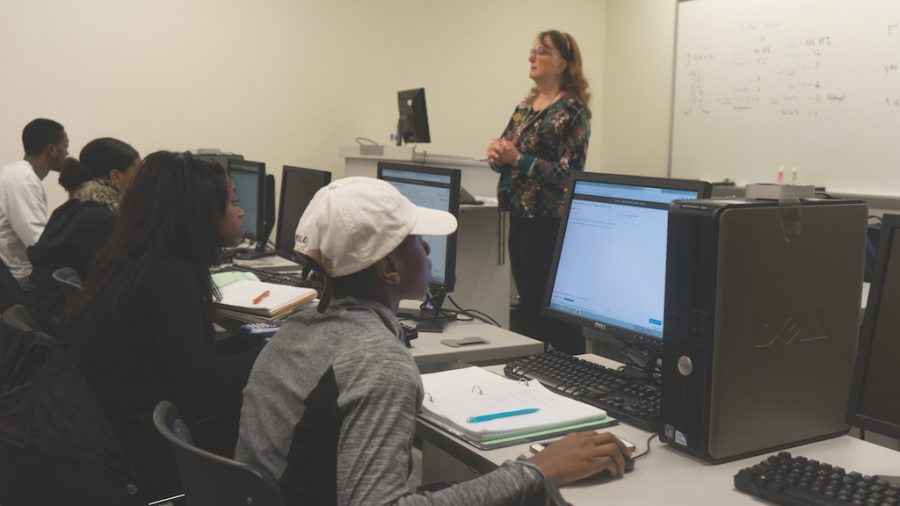Stats satisfies gen ed credit
The MAT 013 and MAT 135 combination course allows a professor to teach the two classes in the same semester in an accelerated fashion.
February 1, 2017
Elementary statistics is becoming the go-to math course to fulfill the general education math requirement at AACC.
Students who are not pursuing their degrees in STEM programs—science, technology, engineering and math—no longer have to take college algebra or trigonometry. Instead, they may take an alternative math course, like elementary statistics.
“Students engage with the [statistics] material because they can see the value in it,” said Dr. Alycia Marshall, associate vice president of learning and academic affairs and the former math department chair. “Students benefit because they can learn something in a math class that they can immediately apply to their own lives.”
While AACC has offered the elementary statistics course for some time, the prior go-to math course was college algebra.
Through changes to a state regulation in 2014, qualifications for a college-level math course have broadened to include alternatives to col lege algebra. High schools throughout the country offer statistics, giving students a helping hand for the transition to college-level math.
“I’ve always wanted to learn how to read statistics,” said Luke Adams, a third-year film major. “It kind of bugs me that I can’t read all of the graphs I see on the news.”
According to Marshall, college algebra professors had begun to notice that their non-STEM students did not need to take college algebra.
The faculty also found the non-majors’ success rate in the algebra course was low, prompting them to begin moving students toward taking statistics instead, which could be more suited to their majors and fulfills their general education requirements.
The college began offering a combination statistics/algebra course in Fall 2014 that combined accelerated intermediate algebra (MAT 013), a non-credit developmental math course, with the three-credit elementary statistics (MAT 135). AACC offers another option: a combination class that includes MAT 013 with college algebra, (MAT 141).
As of this semester, AACC offers a developmental pre-statistics course, MAT 035, which prepares students for elementary statistics.
“This [combination course] was the fastest way to [get my credits], so I could finish math and move on to transferring to a four-year school,” Brad Dress, a sophomore, said.
Since summer 2016, Marshall has been working with Dr. Uri Treisman, executive director of the Charles A. Dana Center at the University of Texas at Austin, to coordinate a nationwide effort to align college math programs to better fit a student’s major.
“It really is a nationwide conversation,” Marshall said. “Getting away from everybody needing college algebra to everybody needing math [in general].”
Marshall and math chairs at other two-year colleges statewide have worked to strengthen the syllabi for elementary statistics courses, increasing the chances that community college statistics credits will transfer to four-year universities.
Marshall’s work with STEM programs has garnered recognition in INSIGHT Into Diversity Magazine, which presented her with the 2015 Inspiring Women in STEM award.












